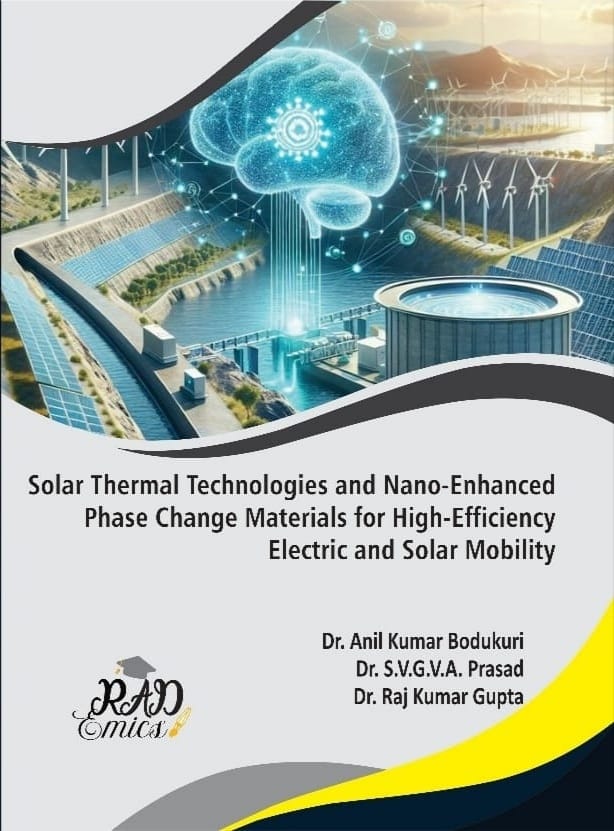
Abstract
The rapid evolution of solar energy technologies necessitates equally advanced solutions for efficient thermal energy storage (TES). Nano-enhanced phase change materials (NePCMs) have emerged as a promising class of materials capable of significantly improving thermal conductivity, energy density, and phase stability in TES systems. The realizing their full potential demands intelligent control, adaptability, and real-time responsiveness to environmental and operational dynamics. This chapter presents a comprehensive framework that integrates algorithmic intelligence with NePCM-based TES to achieve highly efficient, self-regulating thermal storage solutions for solar energy applications.
The incorporation of artificial intelligence (AI), including machine learning algorithms, predictive analytics, and real-time data processing, enables dynamic monitoring, adaptive control, and performance optimization of TES units. The synergistic deployment of sensor networks, Internet of Things (IoT) architectures, and digital twin platforms ensures seamless data acquisition and system modeling, facilitating informed decision-making and autonomous management. This chapter underscores the critical importance of embedding social pedagogy and ethical considerations into the development and deployment of smart TES systems. By doing so, it addresses the need for public engagement, regulatory coherence, and equitable access in the context of advanced energy technologies.
Future trajectories discussed include the development of multifunctional and stimuli-responsive NePCMs, AI-powered thermal self-healing mechanisms, and scalable deployment strategies within smart cities and decentralized energy grids. The proposed interdisciplinary framework bridges the gap between material innovation, intelligent systems engineering, and human-centric policy design—laying the foundation for the next generation of sustainable energy infrastructure.
Introduction
The ongoing global shift toward sustainable energy sources has intensified research into solar power as a clean and inexhaustible alternative to fossil fuels [1]. While solar energy presents numerous environmental and economic advantages, its reliability remains compromised due to its inherent intermittency and dependence on weather and diurnal cycles. This inconsistency restricts its applicability in continuous energy supply scenarios, thereby demanding innovative solutions for efficient energy storage [2]. Thermal Energy Storage (TES) systems have emerged as vital components in the effort to stabilize solar energy availability by capturing surplus thermal energy during peak production periods and releasing it during demand phases. The conventional TES materials, such as water or basic salts, often suffer from limited thermal conductivity, volumetric inefficiencies, and significant energy losses over time [3]. These limitations have catalyzed interest in advanced materials that can store and release heat more effectively, with phase change materials (PCMs) becoming particularly promising due to their ability to utilize latent heat during melting and solidification. Despite their theoretical advantages, traditional PCMs face challenges related to low thermal conductivity and suboptimal cycling performance. Consequently, research has pivoted toward nano-enhanced PCMs (NePCMs), which integrate high-conductivity nanomaterials such as graphene, carbon nanotubes, or metal oxides into PCM matrices to elevate thermal performance. These NePCMs offer improved energy density, enhanced thermal reliability, and faster charging/discharging rates, making them suitable for next-generation TES applications in solar systems [4]. This evolution marks a critical milestone in optimizing energy utilization and storage in solar infrastructure, particularly when integrated with intelligent system management frameworks [5].